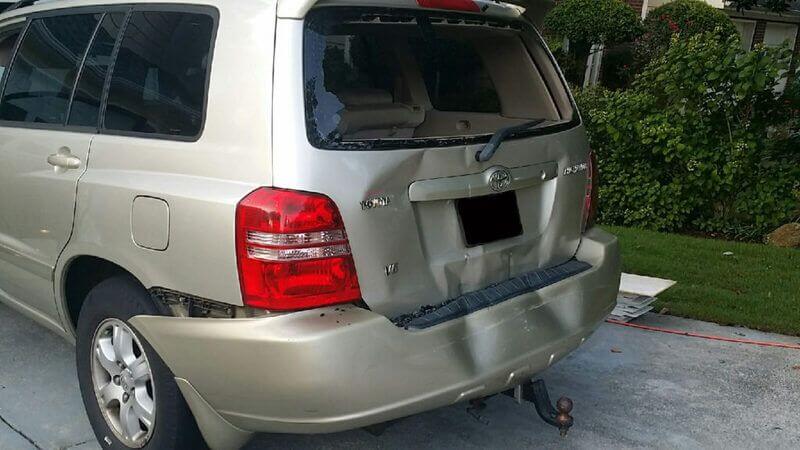Martha was driving on I-285 in stop and go traffic. A Mack truck driving behind her wasn’t paying attention and crashed into the back of her car. The wreck hurt Martha’s neck and back and she required cervical fusion surgery for a herniated disc in her neck. This was a challenging case because Martha already had one cervical fusion surgery for a herniated disc in her neck and had been diagnosed with another herniated disc in her neck before the wreck. Despite this, BBGA attorneys secured a $375,000 settlement for Martha. The insurance company’s highest offer before we filed a lawsuit was $25,000.
The Wreck
Martha was driving westbound on I-285 in Dekalb County when she came to a stop due to traffic ahead. The defendant, a driver for a local trucking company, was following too closely and didn’t have enough time to stop and struck Martha’s vehicle from behind.

Martha’s Injuries
Martha initially thought she was okay. Later that day, her neck and back began hurting, so she went to her family doctor who prescribed medicine and told her to apply heat and ice. When her neck continued hurting, Martha began seeing a chiropractor. Unfortunately, chiropractic treatment didn’t help and the chiropractor referred Martha to an orthopedic surgeon. The surgeon ordered an MRI, which showed two herniated discs in her neck that were impinging on her spinal cord. Spinal cord impingement is where the herniated disc squeezes the spinal cord and can cause pain, numbness and weakness in your arms.
The doctor recommended that Martha have a series of three cervical facet and medial branch blocks. Facets are small, bony joints that connect spine vertebra. Each vertebral segment has two facet joints, one on each side. The cervical facet joints help the neck to move, have control, and provide motion for the spine. The nerves that supply facet joints are called medial branch nerves. Facet joint and medial branch block injections are when a doctor takes a needle and inserts it into the spine and injects anesthesia into the facet joints and medial branch nerves to calm them down and make them pain free.
While those injections initially helped, the pain returned. Martha’s doctor then recommended that she have a series of three epidural injections. An epidural injection is where a doctor uses a needle to inject
anesthesia and a steroid into the nerves of the herniated disc to calm them
down and make them pain-free.
The epidurals helped with Martha’s pain, but it unfortunately came back. Her doctor then recommended she have cervical fusion surgery, which is when the herniated disc is removed and the vertebrae above and below the removed disc are fused together using a steel plate and screws. Martha decided to go through with the surgery. She thankfully made a good recovery and is doing significantly better.
Aggravation of Pre-Existing Condition
About 15 years before the wreck, Martha had cervical fusion surgery for another herniated disc in her neck. When you have a cervical fusion surgery, the fused vertebrae apply more pressure on the vertebrae above and below them. Over time, this can lead to degeneration in the vertebrae above and below the fusion and can cause herniated discs and neck pain. In the couple of years before the wreck, Martha had begun showing signs of adjacent segment disease. She occasionally had neck pain that radiated into her arms and hands and her primary care doctor thought she had a herniated disc.
However, Martha’s symptoms would come and go, and she could deal with them. After the wreck, her pain became much worse, ultimately leading her to have the surgery.
The law calls situations like this aggravation of a pre-existing condition. If you have a pre-existing condition like degeneration or a herniated disc in your neck that isn’t causing you problems and a wreck causes it to become symptomatic and painful and require treatment, the jury can find that the wreck was the cause of the injury. It also applies to situations like Martha’s, where the wreck made her symptoms far worse than they were.
Resolution
Martha’s doctors were ready to testify that Martha had pre-existing conditions and that this wreck aggravated them, made them worse, and required her to need surgery. Shortly before the case was going to be scheduled for trial, we reached a $375,000 settlement with the defense. We’re pleased to have helped Martha with her case.



